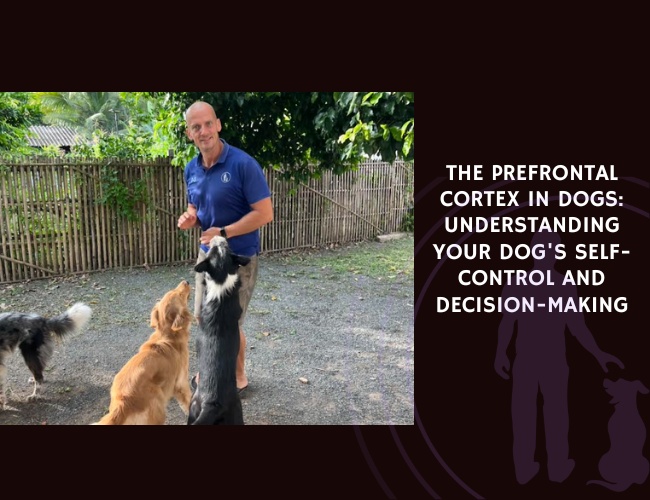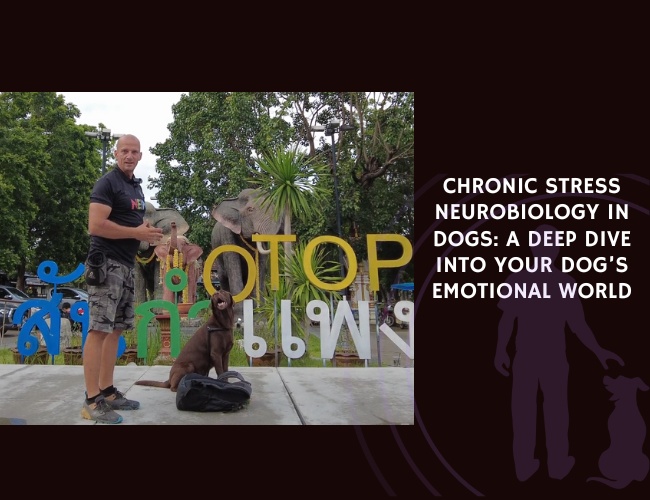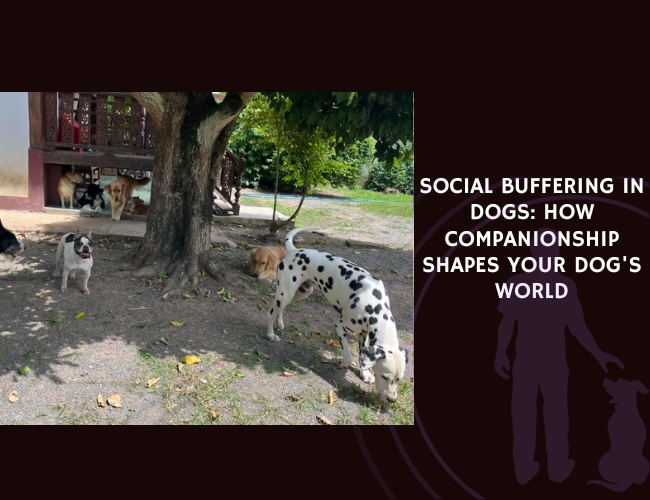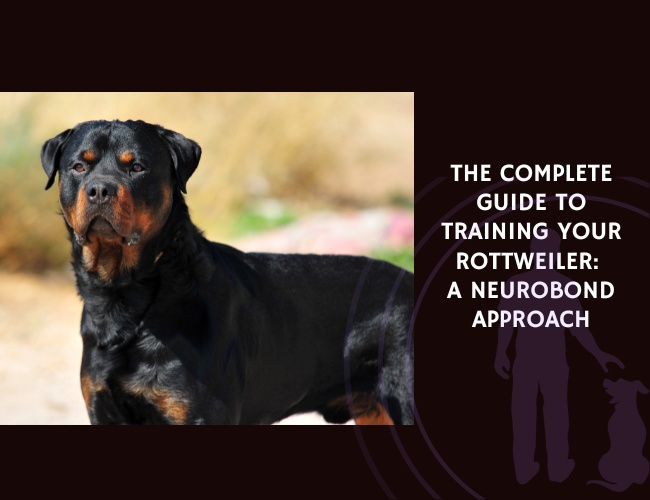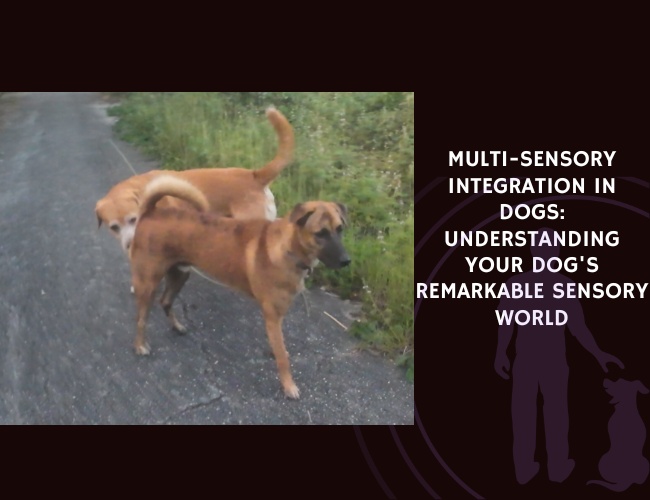Introduction: Your Dog’s Executive Brain at Work
Have you ever wondered why your Border Collie can wait patiently for their dinner while your Beagle seems to lose all self-control at the mere rustle of a treat bag? Or perhaps you’ve noticed how some dogs can resist the temptation of a dropped sandwich while others act first and think later? The answer lies deep within your dog’s brain, specifically in a remarkable region called the prefrontal cortex (PFC) – your furry friend’s command center for self-control and decision-making.
Just like humans, dogs possess this sophisticated brain region that orchestrates their ability to resist impulses, make thoughtful choices, and learn from their experiences. Recent groundbreaking research using advanced brain imaging techniques has begun to unveil the mysteries of how this crucial brain area shapes everything from your dog’s training success to their unique personality quirks. Let us guide you through this fascinating journey into your dog’s mind, where neuroscience meets the everyday reality of living with our beloved canine companions.
Understanding the Canine Prefrontal Cortex
The Architecture of Decision-Making
Your dog’s prefrontal cortex isn’t just a single uniform structure – it’s more like a sophisticated control panel with different sections managing various aspects of behavior and cognition. Think of it as your dog’s personal CEO, coordinating multiple departments to help them navigate their world successfully.
The orbitofrontal cortex (OFC) serves as your dog’s value assessment center. When your pup weighs whether that piece of chicken on the counter is worth the potential scolding, their OFC is hard at work evaluating rewards and consequences. This region lights up like a Christmas tree during brain scans when dogs are making choices about which treat they prefer or deciding whether to wait for a better reward.
The medial prefrontal cortex (mPFC) manages something even more remarkable – your dog’s sense of self and their understanding of social relationships. This area helps your furry friend recognize that they’re a unique individual with their own experiences and helps them navigate the complex social dynamics of both human and canine relationships. When your dog seems to “read your mood” or adjusts their behavior based on who’s in the room, their mPFC is orchestrating this social intelligence.
The lateral and anterior PFC regions act as your dog’s impulse control headquarters. These areas work overtime when your excited pup manages to sit politely instead of jumping on visitors, or when they resist chasing that squirrel during a walk. It’s the biological basis of what we call “good manners” in our canine companions.
How Brain Waves Tell Stories
Modern functional MRI (fMRI) technology has revolutionized our understanding of the canine brain. When researchers place specially trained dogs in MRI scanners (yes, dogs can be trained to lie perfectly still in these noisy machines!), they can observe real-time brain activity as dogs perform various tasks. The BOLD (blood-oxygen-level-dependent) responses captured during these scans reveal which brain regions are working hardest during different challenges.
What’s particularly fascinating is that we can now see individual differences in how dogs’ brains respond to the same situations. Just as some humans are naturally better at resisting that second piece of cake, some dogs show stronger PFC activation when faced with temptation. This neurological variation helps explain why training techniques that work brilliantly for one dog might need adjustment for another.
Individual Differences in Self-Control
The Neuroscience of “Good Dogs” and “Impulsive Pups”
You might notice that some dogs seem born with an innate ability to control themselves, while others struggle with impulse control throughout their lives. Recent research reveals that these differences aren’t just about training or willpower – they’re written in the very structure and function of each dog’s brain.
Dogs who excel at delay of gratification tasks – those patient pups who can wait minutes for a better reward rather than grabbing an immediate smaller treat – show distinctive patterns of brain activation. Their medial prefrontal cortex displays stronger, more sustained activity during waiting periods. It’s as if their brain’s “wait” signal broadcasts more powerfully than in their more impulsive counterparts.
The connectivity between brain regions tells an equally important story. Dogs with superior self-control often show stronger connections between their PFC and subcortical structures like the striatum (involved in reward processing) and the amygdala (the emotion center). These robust neural highways allow for better communication between the brain’s rational planning centers and its emotional, instinctive regions. Think of it as having a better internet connection between your brain’s different departments – messages get through more clearly and quickly.
Beyond Grey Matter: The White Matter Story
While grey matter (where the neuron cell bodies live) gets most of the attention, white matter – the brain’s information superhighways – plays a crucial role in self-control. Using a technique called Diffusion Tensor Imaging (DTI), researchers can measure the integrity of these neural pathways.
Dogs with higher fractional anisotropy (a measure of how well-organized these pathways are) in their fronto-striatal connections consistently perform better on impulse control tasks. It’s like comparing a modern fiber-optic cable to an old telephone wire – the better the connection quality, the more efficiently information flows between brain regions. This white matter integrity may explain why some dogs seem to “get it” quickly during training while others need more repetition and practice.
Training and Brain Plasticity
How Training Shapes the Brain
Here’s where things get truly exciting for dog owners and trainers: your dog’s brain isn’t fixed in stone. Every training session, every successful “wait” command, and every rewarded good choice literally reshapes your dog’s neural architecture. This neuroplasticity means that even dogs who struggle with impulse control can improve with the right approach.
Working and assistance dogs provide a fascinating window into how intensive training transforms the brain. These highly trained professionals show remarkably efficient PFC activation patterns – their brains don’t have to work as hard to maintain self-control because the neural pathways have become so well-established. It’s similar to how an experienced driver barely thinks about the mechanics of driving, while a new driver’s brain works overtime managing every aspect of the task.
When researchers compared assistance dogs to pet dogs performing the same impulse control tasks, they found that the working dogs showed:
- Lower latency in PFC activation (their brains responded more quickly)
- More specific, targeted brain activity (less “noise” in the neural signal)
- Better generalization of skills across different situations
- Stronger task-specific modulation of brain activity
The 6-8 Week Transformation
A structured training protocol focusing on self-control can create measurable changes in your dog’s brain in as little as 6-8 weeks. This isn’t just behavioral improvement – it’s genuine neurological rewiring. Dogs participating in intensive impulse-control training programs show increased PFC activation specificity and improved behavioral metrics that persist long after the training ends.
The training protocol that creates these changes typically includes:
- Impulse-control shaping exercises: Starting with microseconds of self-control and gradually building duration
- Delay-tolerance games: Fun activities that make waiting rewarding rather than frustrating
- Calm-focus routines: Teaching dogs that relaxation is as valuable as excitement
- Low-arousal decision drills: Practicing choices when the dog is calm rather than overstimulated
What makes this particularly encouraging is that these changes occur across all ages and breeds, though the rate and extent of improvement may vary. Your 7-year-old Labrador who’s always been impulsive isn’t a lost cause – their brain retains the capacity for positive change throughout their life.
Breed-Specific Brain Differences
The Genetics of Self-Control
Not all dog brains are created equal, and breed differences in PFC structure and function help explain why your friend’s Border Collie seems like a furry Einstein while your Basset Hound appears more interested in following their nose than following commands. These differences aren’t about intelligence per se, but rather about how different breeds’ brains have been shaped by centuries of selective breeding for specific tasks.
Herding breeds like Border Collies, Australian Shepherds, and German Shepherds consistently show heightened PFC activation patterns, particularly in regions associated with impulse control and rapid decision-making. Their ancestors needed to make split-second decisions about wayward sheep while suppressing their predatory chase instincts – a neurologically demanding task that required exceptional PFC function. Modern herding breeds inherit this neural architecture, which explains their legendary trainability and their sometimes exhausting need for mental stimulation.
Scent hounds like Beagles and Bloodhounds show different patterns entirely. Their PFC activation tends to be less pronounced during visual impulse-control tasks but shows interesting patterns during olfactory challenges. It’s not that these dogs lack self-control – their brains are simply optimized for different types of decision-making. When following a scent trail, a Beagle’s brain shows remarkable sustained attention and decision-making capability, just in a different context than we typically test.
Working breeds developed for human collaboration (Labrador Retrievers, Golden Retrievers, Standard Poodles) show what researchers call “balanced” PFC activation. Their brains seem particularly adept at switching between different types of tasks and show strong fronto-striatal connectivity. This neural flexibility may explain why these breeds excel as service dogs – they can adapt their behavior to varied situations while maintaining consistent impulse control.

The Brachycephalic Brain Factor
Interestingly, cephalic index (head shape) correlates with certain aspects of PFC function. Brachycephalic (flat-faced) breeds like French Bulldogs and Pugs show some structural differences in brain organization due to their compressed skulls. However, this doesn’t necessarily mean reduced cognitive capability – their brains have adapted remarkably to work within their unique anatomy. These breeds may show different patterns of PFC activation, but many demonstrate excellent impulse control when properly motivated and trained.
Practical Applications for Training
Reading Your Dog’s Neural Signals
Understanding the neuroscience behind your dog’s behavior can revolutionize your training approach. When your dog struggles with impulse control, you’re not dealing with “stubbornness” or “defiance” – you’re working with a brain that needs support to strengthen specific neural pathways.
Signs of PFC overload include:
- Sudden inability to perform known commands
- Increased impulsivity after prolonged training sessions
- “Zoomies” or hyperactive behavior following intense mental work
- Difficulty settling after exciting events
When you notice these signs, your dog’s PFC is likely fatigued, just like your muscles get tired after exercise. The solution isn’t more training but strategic rest and recovery. Short, successful sessions build stronger neural pathways than marathon training that exhausts your dog’s executive function.
Building Better Brains Through Games
Transform everyday activities into brain-building exercises that strengthen your dog’s PFC without feeling like work:
The “Magic Mat” Game: Place a mat or towel on the floor and reward your dog every time they choose to lie on it. Gradually increase the difficulty by adding distractions or moving the mat to new locations. This simple game strengthens decision-making pathways and impulse control simultaneously.
“Red Light, Green Light” Walks: During walks, randomly stop and wait for your dog to offer eye contact before continuing. This builds impulse control in a real-world context while strengthening your communication bond.
The “It’s Your Choice” Protocol: Hold treats in your closed fist. Only open your hand when your dog stops trying to get them. This foundational exercise directly engages the PFC’s inhibitory control circuits and can be made progressively more challenging.
Nutrition for Neural Health
Your dog’s brain health directly impacts their PFC function and, consequently, their self-control abilities. Recent research highlights several nutritional factors that support optimal brain function:
Omega-3 fatty acids (particularly DHA and EPA) are crucial for maintaining white matter integrity. Dogs fed diets rich in fish oil show improved cognitive function and may demonstrate better impulse control. Consider adding salmon, sardines, or a high-quality fish oil supplement to your dog’s diet.
Antioxidants protect neural tissue from oxidative stress. Blueberries, sweet potatoes, and spinach aren’t just healthy treats – they’re brain food that supports your dog’s cognitive function. Many dogs enjoy these as training rewards, making them doubly beneficial.
B-vitamins play essential roles in neurotransmitter production and neural communication. Whole grains, lean meats, and eggs provide these crucial nutrients. Dogs on highly processed diets may benefit from supplementation, though always consult with your veterinarian first.
Focus. Pause. Decide.
The brain’s brakes. Your dog’s prefrontal cortex is the control tower that governs impulse restraint, value assessment, and social awareness—turning raw instinct into measured choice.
Connections matter. Strong neural pathways between the PFC, emotion centers, and reward systems create better self-control, faster decision-making, and more reliable training outcomes.

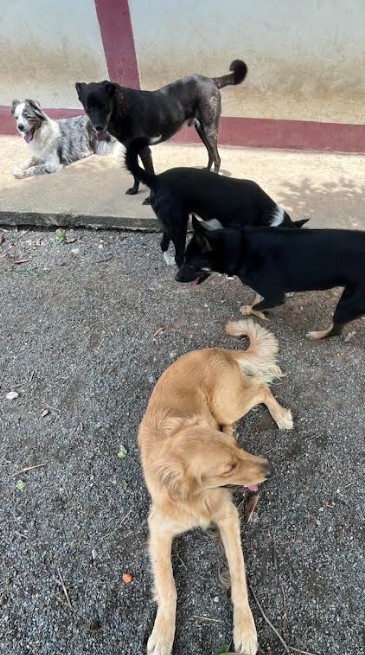
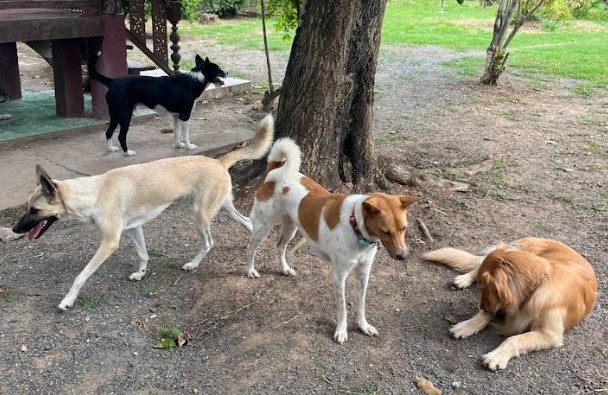
Practice reshapes the mind. Consistent impulse-control training rewires these circuits, transforming even impulsive dogs into calmer, more deliberate partners over time.
Health Implications and Considerations
When the PFC Struggles
Sometimes, persistent impulse control problems signal underlying health issues affecting PFC function. Understanding these connections helps you advocate for your dog’s neurological health.
Cognitive Dysfunction Syndrome (CDS), similar to dementia in humans, affects senior dogs and involves progressive PFC deterioration. Early signs include increased impulsivity, confusion, and loss of previously learned behaviors. While CDS can’t be cured, early intervention with environmental enrichment, dietary support, and sometimes medication can slow progression.
Anxiety disorders can overwhelm the PFC, making impulse control nearly impossible. A dog in a constant state of anxiety has a PFC that’s already working overtime managing emotional regulation, leaving little capacity for behavioral control. This is why anxious dogs often seem to “forget” their training – their executive function is genuinely impaired.
Hypothyroidism, common in many breeds, can affect cognitive function including PFC performance. Dogs with low thyroid hormone may show decreased impulse control, mental dullness, and behavioral changes. The good news? Appropriate thyroid supplementation often restores normal brain function.
Supporting PFC Health Through Life Stages
Your dog’s PFC undergoes predictable changes throughout their life, and adjusting your approach accordingly optimizes their cognitive health:
Puppyhood (8 weeks – 6 months): The PFC is rapidly developing but not fully mature. Short, positive training sessions that end on success build neural pathways without overwhelming the developing brain. Think of it as teaching a toddler – patience and repetition are key.
Adolescence (6 months – 2 years): The teenage brain is notorious for impulsivity, and dogs are no exception. The PFC is still maturing while hormones surge. Consistent boundaries and increased exercise help channel their energy while their brain continues developing.
Adulthood (2 – 7 years): Prime PFC function makes this the ideal time for advanced training. The brain has reached maturity but retains excellent plasticity. Challenge your dog with new skills and complex tasks to maintain neural health.
Senior years (7+ years): Regular mental stimulation becomes crucial for maintaining PFC function. “Use it or lose it” absolutely applies to your dog’s executive function. Puzzle toys, new tricks, and novel experiences help preserve cognitive abilities.
The Science of Successful Training
Timing is Everything
The PFC operates on specific timescales, and understanding these can dramatically improve your training success. Research shows that the canine PFC exhibits distinct activation patterns based on timing:
Immediate responses (0-3 seconds) rely more on subcortical structures than PFC. This is why catching your dog “in the act” is so important for correction – their PFC isn’t driving the immediate behavior.
Short delays (3-30 seconds) engage the PFC increasingly. This is the sweet spot for most training exercises. Your dog’s executive function is engaged but not overwhelmed.
Extended delays (30+ seconds) require sustained PFC activation. Building to this level requires gradual progression. Jumping straight to long durations often results in failure, not because your dog is “stubborn” but because you’re asking their brain to perform beyond its current capacity.
The Role of Arousal States
Your dog’s arousal level directly impacts PFC function. Too excited, and the emotional brain overrides executive control. Too tired, and the PFC lacks the energy for optimal function. The “Goldilocks zone” – calm but alert – provides ideal conditions for strengthening impulse control.
Before training, spend 5-10 minutes in calming activities:
- Gentle massage or TTouch
- Slow, mindful walks with sniffing opportunities
- Calm settling exercises on a mat
This preparation optimizes your dog’s neurological state for learning and helps ensure that training strengthens the right neural pathways.

Environmental Factors and Brain Function
The Hidden Impact of Stress
Chronic stress fundamentally alters PFC function, and many behavioral problems stem from stress-impaired executive function rather than training failures. Cortisol, the stress hormone, can actually damage PFC neurons with prolonged exposure.
Common stressors that impact PFC function include:
- Unpredictable schedules or environments
- Conflict with other pets or family members
- Insufficient rest or overstimulation
- Pain or discomfort from health issues
- Sensory overload in busy environments
Creating a stable, predictable environment supports optimal brain function. This doesn’t mean boring – enrichment is crucial – but rather providing a secure base from which your dog can confidently explore and learn.
Sleep: The Brain’s Maintenance Mode
Quality sleep is when the brain consolidates learning and repairs neural tissue. Dogs need 12-14 hours of sleep daily, with puppies and seniors requiring even more. During REM sleep, the brain replays and strengthens neural pathways formed during training.
Poor sleep quality directly impairs PFC function, leading to:
- Increased impulsivity
- Difficulty learning new behaviors
- Mood changes and irritability
- Reduced problem-solving ability
Ensure your dog has a quiet, comfortable sleeping area away from household traffic. Some dogs benefit from white noise machines or calming music to promote deeper sleep.
Advanced Training Techniques
Shaping Complex Behaviors
Understanding PFC function allows us to shape increasingly complex behaviors by building neural pathways systematically. Rather than expecting immediate perfect performance, we can design training progressions that respect the brain’s learning process.
Backward chaining works particularly well for complex behaviors because it engages the PFC’s planning capabilities. For example, teaching a complex trick by starting with the last step and working backward creates a clear neural pathway from decision to reward.
Variable reinforcement schedules strengthen PFC pathways more effectively than constant reinforcement once a behavior is learned. The uncertainty engages executive function more fully, creating more robust neural connections.
The Power of Predictive Cues
The PFC excels at pattern recognition and prediction. Using consistent cues that predict outcomes helps your dog’s brain prepare appropriate responses. This isn’t just about verbal commands – environmental cues, body language, and routines all provide information the PFC uses to guide behavior.
Creating behavioral chains with clear predictive elements reduces cognitive load while maintaining engagement. For example, the sequence “leash appears → walk happens → specific route → home → dinner” allows the PFC to anticipate and prepare for each transition, reducing impulsivity and improving compliance.
Individual Assessment and Customization
Recognizing Your Dog’s Unique Neural Profile
Every dog has a unique neural fingerprint that influences their learning style and impulse control capabilities. Observing your dog’s behavior patterns helps identify their specific strengths and challenges:
High PFC responders typically show:
- Quick learning of impulse control tasks
- Good generalization across contexts
- Ability to maintain focus despite distractions
- Recovery from errors without frustration
Dogs needing PFC support may display:
- Difficulty with duration behaviors
- Context-specific learning (can’t generalize)
- Emotional volatility during training
- Fatigue quickly during mental work
Tailoring your approach to your dog’s neural profile improves outcomes and reduces frustration for both of you.
Building a Personalized Training Plan
Based on your dog’s individual PFC function, create a customized training approach:
For naturally strong PFC function: Challenge with complex tasks, variable environments, and advanced impulse control exercises. These dogs thrive on mental stimulation and can handle longer, more intensive training sessions.
For developing PFC function: Focus on short, successful sessions with gradual difficulty increases. Build confidence alongside neural pathways. Celebrate small victories and avoid overwhelming the developing executive function.
For impaired PFC function (due to age, stress, or health): Modify expectations while maintaining engagement. Use environmental management to reduce cognitive load. Consider supplements or medications that support brain health, in consultation with your veterinarian.
The Future of Canine Neuroscience
Emerging Research and Technologies
The field of canine neuroscience is rapidly evolving, with new discoveries constantly refining our understanding of how dogs think and learn. Emerging technologies promise even deeper insights:
Portable EEG devices may soon allow real-time monitoring of your dog’s brain activity during training, providing immediate feedback on their cognitive state and learning efficiency.
Genetic testing increasingly identifies markers associated with cognitive traits, potentially allowing prediction of training aptitudes and tailored approaches from puppyhood.
Transcranial stimulation techniques, successful in human cognitive enhancement, are being explored for therapeutic use in dogs with cognitive dysfunction or severe impulse control disorders.
Implications for Dog-Human Relationships
As we better understand the canine brain, our relationships with dogs continue to evolve. Recognizing that behavioral challenges often stem from neurological factors rather than “defiance” promotes empathy and improves welfare. This scientific understanding validates what many dog lovers have always felt – that our dogs are complex individuals deserving of patience, understanding, and respect.
Conclusion: Your Dog’s Amazing Brain
Understanding your dog’s prefrontal cortex transforms how we approach training, behavior, and our overall relationship with our canine companions. That moment when your excited puppy manages to sit politely for their dinner, or when your senior dog remembers a trick they haven’t performed in months – these aren’t just learned behaviors but evidence of remarkable neural processes occurring in their PFC.
Every dog, regardless of breed, age, or training history, possesses this incredible neural machinery capable of growth and adaptation. By understanding how the PFC functions, recognizing individual differences, and applying science-based training approaches, we can help our dogs develop stronger impulse control and better decision-making abilities. More importantly, we can appreciate the complex cognitive life happening behind those soulful eyes.
Remember that building better impulse control isn’t about creating robotic obedience – it’s about giving your dog the neural tools to navigate our human world successfully while maintaining their unique personality and joy. Whether you’re working with a naturally gifted Border Collie or a delightfully impulsive Beagle, understanding the brain behind the behavior helps you become a better teacher, advocate, and friend to your furry companion.
The journey into understanding your dog’s prefrontal cortex reveals a truth both scientific and heartwarming: our dogs aren’t just responding to commands or seeking rewards. They’re thinking, deciding, and sometimes struggling with the same self-control challenges we face. In recognizing this shared neural experience, we deepen our connection and improve our ability to help them thrive. Your dog’s brain is constantly growing, adapting, and learning – and with your support, there’s no limit to what you can achieve together. 🧡
Next time you watch your dog pause before making a choice, remember you’re witnessing millions of years of evolution and thousands of years of domestication culminating in that moment of canine contemplation. It’s nothing short of remarkable, and it happens in your living room every day. 🐾

